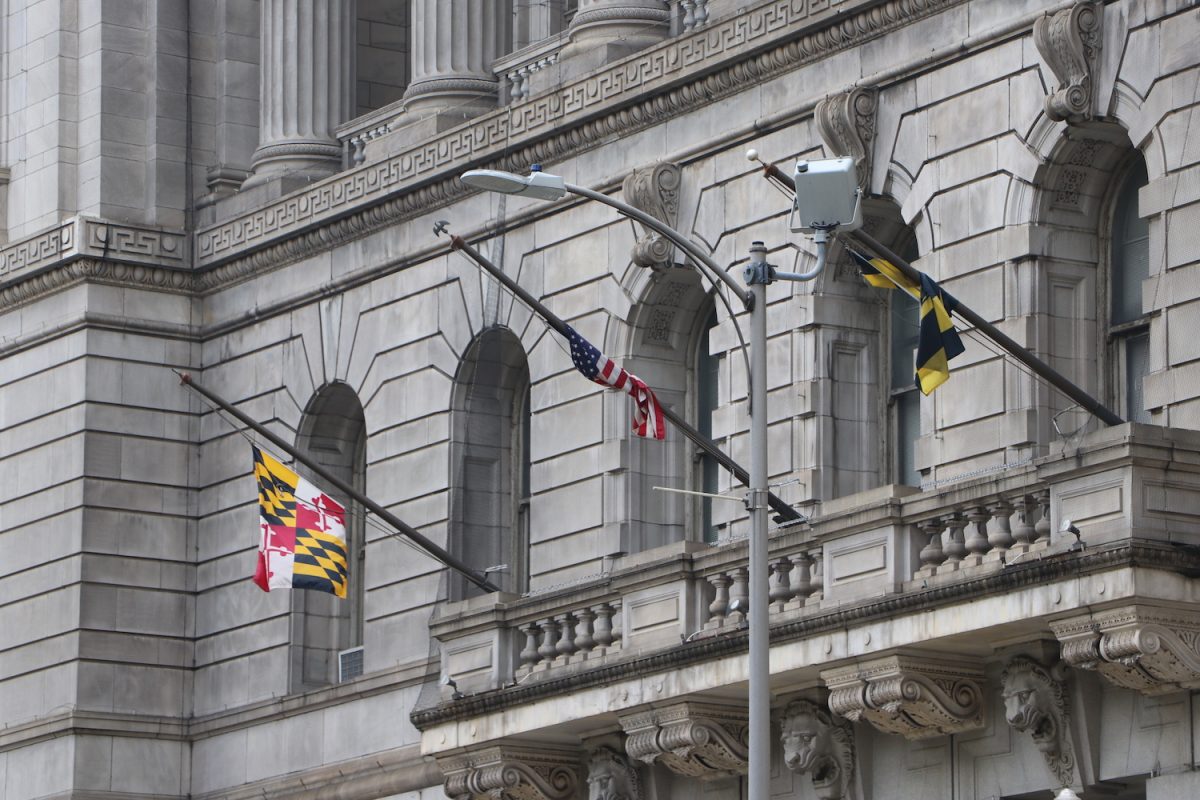
Thank you for reading Baltimore Witness.
Consider making a donation to help us continue our mission.
By
Sarah Mullen [former]
- April 8, 2024
Attempted Murder
|
Court
|
Daily Stories
|
Homicides
|
Shooting
|
Suspects
|
Victims
|
“I know it’s almost summertime, but I didn’t know it was the 4th of July quite yet,” the prosecutor remarked in her fiery rebuttal to defense’s closing arguments in a 2023 homicide case.
At trial on April 5, she alleged that defense attorney Daniel Mooney’s points about the victims’ violent lifestyles “were a bunch of fireworks” meant to distract the jury from the main focus — the culpability of the defendant, 20-year-old Benjamin Rowland, Jr.
Rowland is charged with two counts of first-degree murder, two counts of attempted first-degree murder, two counts of first-degree assault, two counts of conspiracy to commit first-degree murder, three counts of using a firearm in a felony violent crime, having a handgun in his vehicle and possessing a firearm as a minor.
Baltimore City Circuit Court Judge John A. Howard presided as counsel argued over what really transpired on Jan. 13, 2023, at the intersection between South Canton Avenue and Lohrs Street.
Both court documents and previous coverage indicate that around 2:22 p.m., four suspects exited their vehicle and fired 45 shots at a 2007 silver Honda Accord with three victims sitting inside. One of the victims, 18-year old Joseph Kawa, died from two gunshot wounds to the head and thigh. Rowland was the only individual ever charged in connection with this incident.
The prosecutor narrated her version of Rowland’s “egregious act” one timestamp at a time, matching up maps of Rowland’s cell phone’s location to surveillance footage obtained from three local establishments. She traced what she believed was Rowland’s vehicle, a gray Infiniti with “distinct damage on the trunk to the immediate right of its insignia” as it approached the crime scene.
The gray Infiniti was located from still surveillance footage images and eventually seized during a tactical stop on March 2, 2023, six weeks after the shooting. Police identified Rowland as the driver, allegedly recovering a Glock 19 from his waistband and seizing his cell phone.
While the prosecution focused on how seven out of 45 shell casings found at the scene were consistent with Rowland’s handgun according to a firearms expert, Mooney emphasized the lack of contact between Rowland and the victims from his phone records and social media accounts.
Two other significant pieces of evidence discussed were an Instagram live video capturing the last moments of two of the victims’ lives and a jail call between Rowland and an unknown inmate.
“Some s**t just happened,” Rowland said at one point during the call. The prosecution emphasized how one witness testified that Rowland’s subsequent comments about scoring a layup and practicing basketball as code for murder based on his experience as a detective on other cases.
Mooney attempted to paint the shooting as foreseeable given the victims’ lifestyles, which he claimed were “plagued by violence.” One victim’s Instagram account contained numerous photos of guns and advertised what Mooney believed were drug “deals all day.”
Cell phone data displayed geographically on a map presented an additional cause for debate. The prosecution alleged that jurors heard testimony from an FBI expert about the significance of two converging arcs in estimating a cell phone user’s location. In response, the defense cast doubt on the reliability of such large distance estimations, especially given that the defendant’s new address would explain why he was within the vicinity of the crime scene that afternoon.
